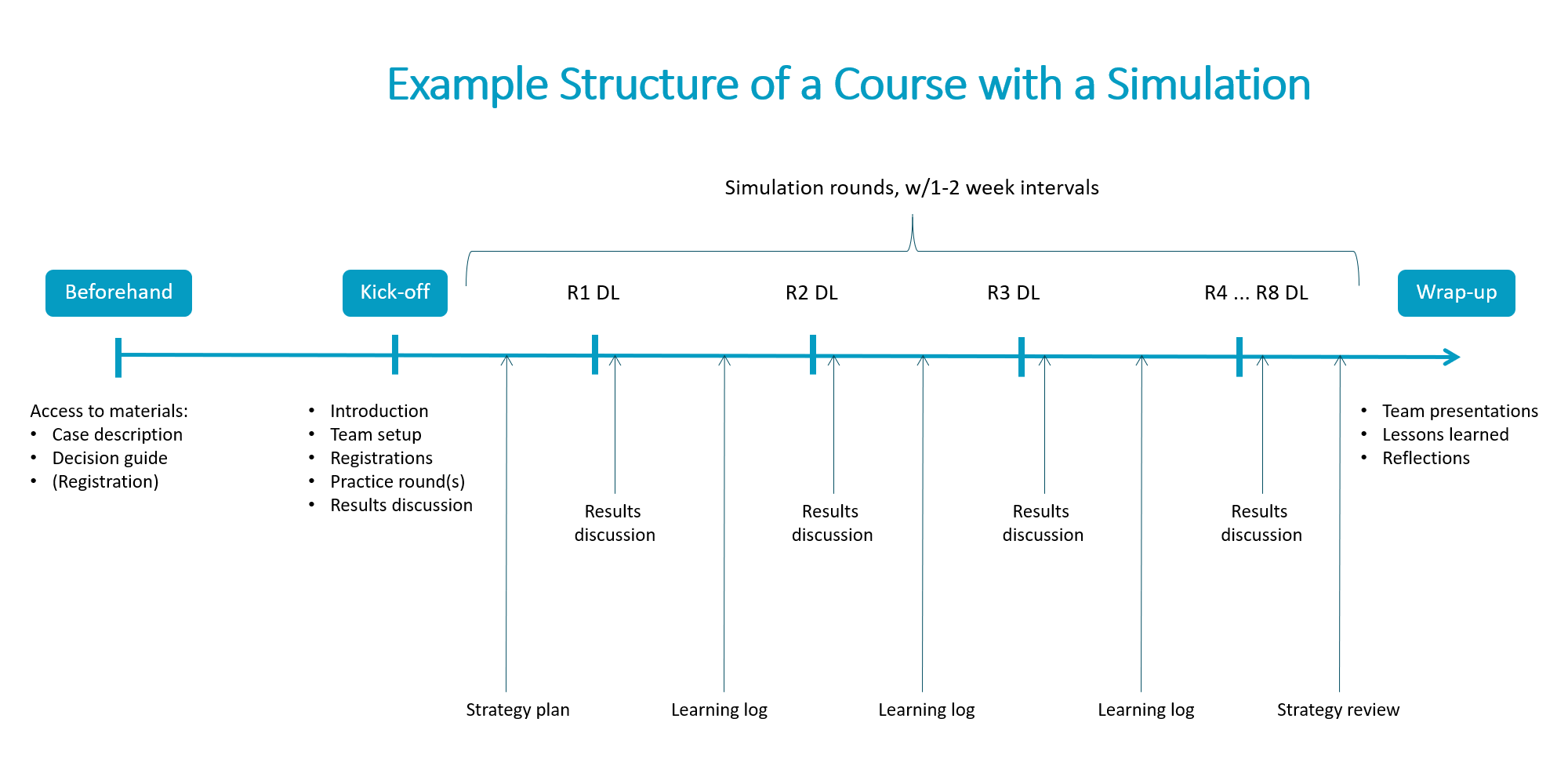As an educator looking for a boost in student engagement you might be thinking about implementing a business simulation in your course. Consequently you wonder if/how you can utilize your existing materials and integrate those with the simulation to provide a full learning experience for your students. If you have gotten this far you are on the right track. Namely, a simulation is a way to put theory into practice and if there is no theory, the simulation can become a game-play only.
Better together
 It is not news to anybody anymore that experiential learning improves learning and learning retention. But the challenge typically lies in the integration. How do I make sure that my students are learning things that they are supposed to be learning? Even though participants gain intuitive knowledge by playing a simulation, some might not be able to make the necessary associations between the newly-acquired knowledge and the subject of study.
It is not news to anybody anymore that experiential learning improves learning and learning retention. But the challenge typically lies in the integration. How do I make sure that my students are learning things that they are supposed to be learning? Even though participants gain intuitive knowledge by playing a simulation, some might not be able to make the necessary associations between the newly-acquired knowledge and the subject of study.
Here comes you and your existing content into the picture. True learning takes place at the convergence of the experience provided by the simulated environment, and the discussions initiated by the instructor around it. Make no mistake, you as an instructor, don't need to be the foremost expert in the simulation detail but you need to be prepared to facilitate discussions. In other words, concentrate on asking the right questions and let the students find the answers. Simulation packages typically come with robust manuals and customer support so you don't need to be the book of right answers. But the presence of the instructor and the discussions that you initiate are essential in order for participants to acquire much more domain-specific knowledge than they would obtain by just playing the game.
Joseph Wolfe, Ph. D, who has done a plenty of teaching and research with simulations has defined what constitutes a good debrief with simulations:
A good debrief [...] allows the individuals who were in the experience to share, cross-fertilize, and to generalize their learnings from and between those who participated in the same experience.
A word of caution; you may find that some students, especially those that are used to excelling in rote learning, will be terrified for not having the right answers. But that is a healthy exercise and preparation for what they will experience after graduation.
In practice
A good structure is a must. Below is a picture that describes a typical (but not the only) simulation learning process. The important elements are:
- Introduction - can be done by the instructor her-/himself or with a video (usually provided by the simulation vendor).
- Practice round(s) - help the students overcome the initial fear of unknown.
- Planning - If one does not know where to sail, no port is favorable (or all are). Planning is typically done after the practice round(s) are completed. The output should be a written document, spreadsheet, or presentation that outlines the team's initial strategy and implementation steps.
- Learning log - a quick summary of what happened, what were the successes, failures, what did we learn, and how will we improve. In the learning logs you can ask the students to reflect on the particular subject matter that is discussed in the classroom at present. Can be done for each round or 2-3 times during the entire process.
- Final report - a reflection of what was the strategic intent, what actually happened, what went well, what did not etc. Again this is an opportunity for the students to demonstrate how they integrate the theory and the simulation.

In summary, good business simulations are not only easy to set up and implement, but you can also combine them with preexisting instructional materials.
Furthermore, we've previously debunked myths about business simulations which might be deterring educators from introducing them in their classroom. Here's a quick video summary:
If you are thinking about implementing a business simulation in your course, please follow the link below to request a live walk-through of Cesim Simulations. One of our experts will discuss with you in detail about how Cesim can help you transform your course now.
Sources:
- A Meta-Analysis of the Cognitive and Motivational Effects of Serious Games
- Serious Games, Debriefing, and Simulation/Gaming as a Discipline
- A meta-analytic review of the role of instructional support in game-based learning
Read more:
- The Learning Equation - How Do Business Simulation Games Complement Theoretical Knowledge [White Paper]
- 5 Myths About Business Simulations (That Hold Educators Back)
- The Role of The Instructor in Business Simulation Games [Study]
- How To Integrate a Marketing Simulation Game Into Your Course
- Download Cesim Grading Excel Template


